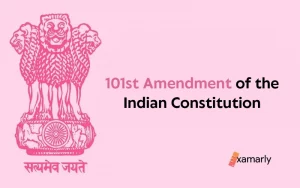Are you confused about the difference between communism and communalism? You’re not alone! These two ideologies may sound similar, but they have distinct beliefs, goals and ways of achieving them. These ideologies played a significant role in the major events in history.
On the surface, both communism and communalism advocate for a society where resources and property are collectively owned and controlled, but the similarities end there. Imagine a world where everyone works for the common good and shares the wealth equally, but how do we get there?
Is it through a revolution or gradual change? Is the ultimate goal to eliminate private property or to ensure fair distribution of wealth?
These are some of the questions we will explore in this post as we dive into the key distinctions between communism and communalism. Get ready to be enlightened and engage with one of the most debated and fascinating topics in political and social theory.
- What Is Communism?
- How The Term 'Communism' Originated?
- What Are The Significant Characteristics Of Communism?
- The Role Of Government In the Implementation Of Communist Ideology:
- What Are The Types Of Communism
- 6 Crucial Examples Of Communism
- What Is Communalism?
- How The Term Communalism Originated?
- What Are The Significant Characteristics Of Communalism?
- Role Of Government In The Implementation Of Communalist Ideology
- What Are The Types Of Communalism
- 7 Crucial Examples Of Communalism
- Summing Up
- Frequently Asked Questions
What Is Communism?
Communism is a political and economic ideology that advocates for collective social ownership and control of the modes of production, distribution, and exchange. The ultimate goal of communism is to create a classless society where all property and resources are communally owned and controlled, and where everyone works for the common good.
This is to be achieved through a revolution that overthrows the existing capitalist mode and system and replaces it with a socialist system of government, where the state controls and regulates the economy.
The idea is that by eliminating the exploitation of one class by another, and by ensuring equal distribution of wealth, society will be able to achieve greater equality, freedom, and prosperity.
How The Term ‘Communism’ Originated?
Karl Marx is considered the “father of communism.” He was a German philosopher, economist, and political theorist in the 19th century who developed the theory of communism.
He wrote extensively on the subject, most notably in his book “The Communist Manifesto” (co-written with Friedrich Engels) and in “Das Kapital.” Marx’s ideas were heavily influenced by the Industrial Revolution and the increasing wealth disparities it created.
He argued that the capitalist mode, in which a small capitalist class owns the means of production and exploits the working class, was inherently unjust and would inevitably lead to a revolution.
He believed that the working class, or the proletariat, would rise and overthrow the capitalist mode, replacing it with a socialist system that would eventually evolve into a classless communist society.
Related: Capitalism Vs Socialism Vs Communism
What Are The Significant Characteristics Of Communism?
here are several important characteristics of communism:
- Collective ownership and control of the means of manufacturing: In a communist society, the community as a whole owns and controls the means of production, distribution, and exchange. This eliminates the exploitation of one class by another and ensures that wealth and resources are distributed fairly among all members of society.
- Classless society: The ultimate goal of communism is to create a classless society, where there is no distinction between the rich and the poor, and where everyone works for the common good.
- Abolition of private assets: In a communist society, private property is abolished, and all resources and property are communally owned and controlled.
- Centralized government control: The government plays a central role in controlling and regulating the economy, and in ensuring that the principles of communism are upheld.
- Elimination of the market financial system: Under communism, the market economy is replaced by a planned economy, where the government decides what goods and services will be produced and how they will be distributed.
- Achieved through revolution: In theory, communism is typically achieved through a revolution where the working class overthrows the ruling capitalist mode and class.
It’s important to note that the above-mentioned characteristics are theoretical or idealised and the implementation of communism in practice can differ greatly.
The Role Of Government In the Implementation Of Communist Ideology:
The role of government in the implementation of communist ideology is a central and crucial aspect of the ideology. In theory, communism envisions a society where the means of production, distribution, and exchange are owned and controlled by the community as a whole, and where there is no distinction between the rich and the poor.
To achieve this, the communist governments play a key role in controlling and regulating the economy, and in ensuring that the principles of communism are upheld.
One of the main responsibilities of the left-leaning government in a communist society is to implement policies and regulations that promote the collective social ownership of resources and the fair distribution of wealth.
This is typically done through the establishment of a planned economy, where the government decides what goods and services will be produced and how they will be distributed. The government also plays a role in ensuring that the rights and welfare of citizens are protected and that society is stable and secure.
Another key responsibility of the left-leaning government in a communist society is to protect and promote the ideology itself. This is typically done through the establishment of a one-party state, where the Communist Party is the only legal political party, and where the government and the party are closely intertwined.
The party is responsible for promoting the ideology, and for ensuring that society is moving towards the ultimate goal of a classless society.
It’s important to note that in practice, the implementation of the communist party can vary greatly, and the role of government can also be different in different communist countries.
Read More: Difference Between Socialism And Communism
What Are The Types Of Communism
Communism is a political and economic ideology that advocates for the abolition of private ownership and the creation of a classless society in which goods and resources are shared equally among all members. Here are the 5 major types of communism.
- Marxism-Leninism: This type of communism, developed by Karl Marx and Vladimir Lenin, emphasizes the need for a revolutionary overthrow of capitalism and the establishment of a socialist state.
- Maoism: Developed by Chinese leader Mao Zedong, this type of communism emphasizes the importance of revolutionary action by the rural peasantry and the need for a strong centralized state.
- Trotskyism: Developed by Leon Trotsky, this type of communism emphasizes the need for worldwide revolution and the establishment of a socialist state.
- Anarcho-communism: This type of communism emphasizes the need for the immediate abolition of the state and the establishment of a society based on self-governance and the direct control of the modes of production by the working class.
- State-communism: This type of communism emphasizes the need for a strong centralized state to guide the transition to socialism and the establishment of a classless society.
These are not the only forms of communism, and there are different variations and interpretations of each type of communism. Some communist movements of the communist party are more extreme and violent, while others are more peaceful and gradual in their approach.
6 Crucial Examples Of Communism
Here are several examples of countries that have implemented communism as their political and economic system, including:
- Soviet Union (1917-1991): The Soviet Union was the first country to officially adopt communism as its system of government. The Soviet government implemented a planned economy, collectivized agriculture, and established a one-party state under the Communist Party of the Soviet Union (CPSU).
- China (1949- present): After the Chinese Communist Party (CCP) came to power in 1949, China implemented a series of policies that aimed to collectivize agriculture, establish a planned economy, and promote communist ideology. Today, China is a socialist country that has a market economy but the CPC is still the only legal political party and it has a significant role in the economy.
- Cuba (1959- present): In 1959, the communist-led 26th of July Movement, led by Fidel Castro, came to power in Cuba and established a socialist government. The government nationalized industries, collectivized agriculture, and established a one-party state under the Communist Party of Cuba.
- Vietnam (1945- present): The Communist Party of Vietnam (CPV) came to power in Vietnam in 1945 and established a socialist government. The government implemented policies aimed at collectivizing agriculture, promoting land reform, and establishing a planned economy.
- Laos (1975- present): The Lao People’s Revolutionary Party (LPRP) came to power in Laos in 1975 and established a socialist government. The government implemented policies aimed at collectivizing agriculture, promoting land reform, and establishing a planned economy.
- North Korea (1948- present): North Korea was established as a communist state in 1948 and is currently led by the Workers’ Party of Korea (WPK). The government has implemented policies aimed at collectivizing agriculture, promoting land reform, and establishing a planned economy.
Note:
The Communist party has had a significant impact on Europe throughout the 20th century. After the Russian Revolution of 1917, communist ideas spread to other countries in Europe, leading to the establishment of communist governments in several Eastern European countries after World War II.
These countries, including Poland, Czechoslovakia, Hungary, Romania, Bulgaria, and East Germany, were known as the Eastern Bloc and were under Soviet control.
In Western Europe, communist parties had significant support and influence in many countries, particularly in France and Italy. However, they were never able to gain power in these countries.
In the late 1980s and early 1990s, the communist governments of Eastern Europe fell as part of the broader collapse of the Soviet Union. Today, most European countries have transitioned to democratic, capitalist mode, and communism is no longer a major political force in the region.
It’s important to note that these are examples of countries that have implemented communism in some form or another, but in reality, the implementation of communism in these countries varied greatly, and the characteristics and results of communism also varied depending on the country.
Related Article: Difference Between Fascism And Communism
What Is Communalism?
Communalism refers to the actions or ideologies that promote the separation of people into different religious or ethnic communities and the subsequent incitement of conflict and violence among these communities.
This can manifest in many ways, such as the promotion of divisive rhetoric, the segregation of communities, or the encouragement of violence against people from different communities.
Communalism often arises from historical events such as religious conflicts or tensions between different ethnic groups.
These events can lead to the development of deep-seated prejudices and biases that are then used to justify the separation of communities and the promotion of violence. The result of communalism is usually a society that is deeply divided along religious or ethnic lines, with little trust or cooperation between different communities.
How The Term Communalism Originated?
The term “communalism” was created by the British colonial government to describe the religious and ethnic conflicts and violence it encountered, particularly in British West Africa and the Cape Colony, during the early 20th century.
It was used to refer to the Hindu-Muslim riots and other forms of violence between different groups in its colonies. There is no religious tolerance with the communalism ideology.
What Are The Significant Characteristics Of Communalism?
- Separation of people into different religious or ethnic communities: Communalism promotes the idea that people should be separated into different communities based on their religion or ethnicity.
- Incitement of conflict and violence among communities: Communalism often leads to conflict and violence between different communities, as individuals or groups within those communities are encouraged to view others as a threat or enemy.
- Promotion of divisive rhetoric: Communalism often involves the use of divisive rhetoric, such as hate speech or stereotypes, to dehumanize and demonize members of other communities.
- Segregation and discrimination: Communalism can lead to the segregation of communities, with people from different backgrounds being forced to live apart from one another. This can also result in discrimination and unequal treatment of different communities.
- Historical events as the root cause: Communalism often arises from historical events such as religious conflicts or tensions between different ethnic groups. These events can lead to the development of deep-seated prejudices and biases that are then used to justify the separation of communities and the promotion of violence.
- Deep division of society: The result of communalism is usually a society that is deeply divided along religious or ethnic lines, with little trust or cooperation between different communities.
Role Of Government In The Implementation Of Communalist Ideology
The role of government in the implementation of the communalist mode can vary depending on the specific context and government in question. However, in general, governments that promote communalist ideology may take several actions:
- Encouraging the separation of communities: Governments may use policy or legislation to encourage the separation of people into different religious or ethnic communities or to create barriers that make it difficult for people from different communities to interact or coexist.
- Provoking or supporting communal violence: Governments may provoke or support communal violence by providing support or resources to one community while suppressing or oppressing another.
- Using divisive rhetoric: Governments may use divisive rhetoric, such as hate speech or stereotypes, to dehumanize and demonize members of other communities.
- Suppressing minority rights: Governments may suppress the rights of minority communities to maintain the dominance of a certain community or ideology.
- Manipulating the historical events: Governments may manipulate historical events and facts to justify their communal ideologies and policies.
- Using state’s resources for promoting the communal agenda: Government may use the state’s resources such as media, education, and security apparatus to promote their communal agenda.
It’s important to note that not all governments that promote communalist ideologies will engage in all of these actions and that the specific ways in which a government promotes communalism will depend on the country, political system, and individual actors within the government.
Communalism In Indian Society
Communalism in Indian society refers to the promotion of separate religious or ethnic identities, conflicts and violence among different communities. It has a long history in India and has been driven by a variety of factors including religious differences, historical tensions, and political manipulation.
One of the main drivers of communal feelings in Indian society has been the longstanding religious divide between Hindus and Muslims. This divide has been exacerbated by historical events such as the partition of India in 1947, which led to widespread violence and displacement of millions of people along religious lines.
Communalist mode in India has also been fueled by the actions of political parties and leaders who have used divisive rhetoric and policies to gain power and maintain control. This has included the use of hate speech and the manipulation of historical events to justify discrimination and violence against minority communities.
Communal violence has been a recurring problem in Indian society, with incidents of communal riots taking place throughout the country’s history, leading to loss of lives, properties and displacement.
Additionally, government policies and actions, such as the demolition of the Babri Masjid in 1992, have been seen as contributing to communal tensions and violence.
In recent years, there have been concerns about a growing trend of communalism and religious intolerance in India, with incidents of mob violence against minority communities, the rise of Hindu nationalism groups, and a perceived lack of action by the government to address the issue.
It’s important to note that India is a diverse and complex country and that communalism is not a monolithic phenomenon. Different regions and communities may experience communalism in different ways, and there are also many individuals and groups working to promote peace and understanding among different communities in India.
What Are The Types Of Communalism
There are several different types of communalism, each with its distinct characteristics and causes. These types include:
- Ethnic communalism: This type of communalism is based on differences in ethnicity or race. It often arises from historical tensions or conflicts between different ethnic groups.
- Religious communalism: This type of communalism is based on differences in religion. It often arises from religious conflicts or tensions between different religious groups.
- Sectarian communalism: This type of communalism is based on differences within a single religion. It often arises from conflicts between different sects or denominations within a religion.
- Nationalist communalism: This type of communalism is based on differences in nationalism or identity. It often arises from conflicts or tensions between different national or regional groups.
- Political communalism: This type of communalism is based on differences in political beliefs or affiliations. It often arises from political manipulation or the use of divisive rhetoric by political leaders.
It’s important to note that these types of communalism are not mutually exclusive and can overlap and interact with each other in complex ways.
Additionally, different regions and communities may experience communalism in different ways, based on their specific historical, political and social contexts.
7 Crucial Examples Of Communalism
There have been many examples of communalism throughout human history, both within India and in other parts of the world. Some of the most significant and crucial examples include:
- Partition of India in 1947: The partition of British India into India and Pakistan led to widespread communal violence and the displacement of millions of people along religious lines.
- Gujarat riots of 2002: A series of violent riots in the Indian state of Gujarat, in which Hindu mobs targeted Muslims, leading to the deaths of over 1000 people, most of them Muslims.
- Babri Masjid demolition in 1992: The destruction of the Babri Masjid in Ayodhya by Hindu nationalist mobs led to widespread communal violence and the deaths of over 2000 people, mostly Muslims.
- The Bosnian war (1992-1995): Ethnic tensions between Bosnian Serbs, Croats, and Muslims escalated into a violent war in which both sides committed atrocities against civilians.
- The Rwandan Genocide (1994): Ethnic tensions between the Hutu and Tutsi ethnic groups in Rwanda led to the mass slaughter of an estimated 800,000 Tutsi and moderate Hutu.
- The Syrian Civil War: The civil war in Syria has been characterized by sectarian and ethnic divisions, with various groups fighting for control of the country, leading to a humanitarian crisis and the displacement of millions of people.
- The Troubles in Northern Ireland: A period of communal violence and political conflict in Northern Ireland between Catholic and Protestant communities, which lasted from the late 1960s to the late 1990s.
These examples illustrate how communalism can be destructive and lead to large-scale human society suffering. It’s important to note that communalism is not an isolated phenomenon, and is often linked to other issues such as political manipulation, economic inequality and historical injustices.
Communalism Vs Communism: What Is The Difference
| Communalism | Communism |
|---|---|
| A deliberate effort to incite division and violence by promoting distinct religious or ethnic identities and fomenting conflicts among different communities. | A political and economic ideology that advocates for the abolition of private ownership and the creation of a classless society in which goods and resources are shared equally among all members. |
| based on differences in religion, ethnicity, nationalism, political beliefs or affiliations. | based on the class struggle and the abolition of private property. |
| It often arises from historical events such as religious differences and communal tensions. | It often arises from the exploitation and oppression of the working class by the capitalist mode and class. |
| The result is usually a society that is deeply divided along religious or ethnic lines, with little trust or cooperation between different communities. | The result is the establishment of a classless society where goods and resources are shared equally among all members. |
| It’s often used as a tool by the ruling class to maintain power and control over society. | It’s often used as a tool to empower the working class and promote social equality. |
Summing Up
Communism and communalism are two distinct ideologies with distinct historical roots and implications. Communism is a political and economic ideology that seeks to create a classless society through the collective ownership of the means of production.
Communalism, on the other hand, is a social and political ideology that emphasizes the importance of community and the collective good, often within the context of a specific ethnic or religious group.
While the two ideologies may share some similarities, they are fundamentally different and should not be conflated. It is important to understand the nuances and distinctions between these ideologies to fully grasp their implications and potential effects on society.
Frequently Asked Questions
What is communism?
Communism is a political and economic ideology that seeks to create a classless society through the collective social ownership of the forces of production. It is based on the idea that everyone should have equal access to the resources and means of producing goods and services.
What is communalism?
Communalism is a social and political ideology that emphasizes the importance of community and the collective good, often within the context of a specific ethnic or religious group.
It stresses the importance of community and the collective good, rather than individual gain.
What are the main differences between communism and communalism?
The main difference between communism and communalism is that communism is focused on creating a classless society through collective social ownership of the forces of production, while communalism is focused on promoting the importance of community and the collective good within a specific ethnic or religious group.
Are communism and communalism related?
While the two ideologies may share some similarities, they are fundamentally different and should not be conflated.
Can you give an example of a country that has implemented communism?
The Soviet Union and China have been examples of countries that have implemented communism in the past.
Can you give an example of a country that has implemented communalism?
India has been an example of a country where communalism has been implemented in the past.






